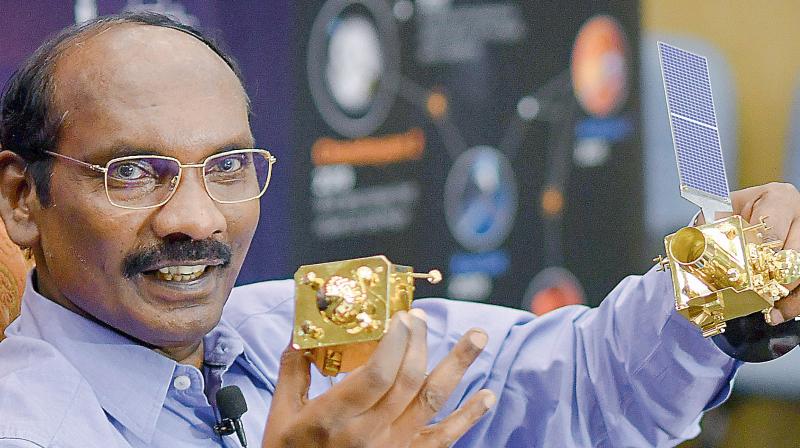ISRO lines up three new space missions

Nellore: India’s space agency has said that three science missions are in the pipeline — a mission to the planet Venus, a twin-satellite experiment and a joint science mission with France.
The two-satellite experiment, Disha, will study the aeronomy, the uppermost layer of Earth’s atmosphere before space. Trishna, the joint mission with CNES of France, is meant for accurate mapping of land surface temperatures.
There is also Aditya Ll, which will travel 1.5 million km from Earth to a point where the Sun will be continuously visible, and conduct studies on the corona, chromosphere and photosphere of the nearest star.
Dr K. Sivan, Chairman of the Indian Space Research Organisation, said some hardware for the Aditya LI was complete.
Importantly, Dr Sivan said there was a directive to launch an unmanned mission before the 75th anniversary of India's independence. An unmanned launch is the first major step before the Big Daddy of them all: Gaganyaan, to launch Indian astronauts to space on an Indian rocket from an Indian spaceport.
In his New Year message to the Isro workforce, Dr Sivan said the immediate task this year is the launch of two Earth observation satellites, one aboard the workhorse Polar Satellite Launch Vehicle (PSLV) and the other on the first flight of the Small Satellite Launch Vehicle (SSLV).
But all eyes are on Gaganyaan. Dr Sivan said many test flights for the crew escape system of Gaganyaan and launch of the first unmanned mission ahead of the human flight are on the anvil.
The design phase of Gaganyaan is complete, and it has entered the testing phase. Tests are in progress for the human-rated Lll0 Vikas engine, the cryogenic stage, the crew escape system motors and service module propulsion system, he said.
The S200 motor has been realised for the ground test; these are high-thrust solid propellant strap-on boosters for the GSLV-MKIII that will take Indian astronauts to space.
Dr Sivan said the main parachute drop test has commenced. Astronauts have completed the generic spaceflight training abroad. The Indian leg of mission-specific training has also commenced.
Dr Sivan said the design changes and testing for Chandrayaan-3 had seen huge progress. It could be launched by middle of next year.
Meanwhile, NewSpace India Limited (NSIL) a space sector Central public sector enterprise, has started working on its expanded mandate of being a manufacturer and operator of space systems.
The GSAT-24 will be the first demand driven satellite. NSIL has submitted many proposals to launch satellites for both domestic and international customers. It turned profitable in its very first year of operation and has remitted 154 per cent of its paid-up capital to the Centre.

